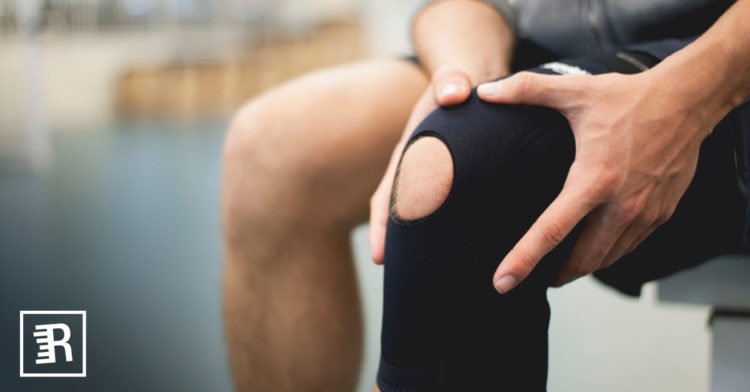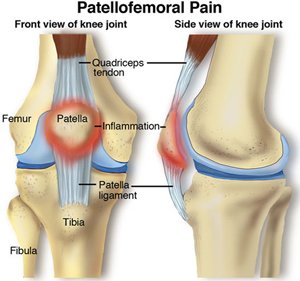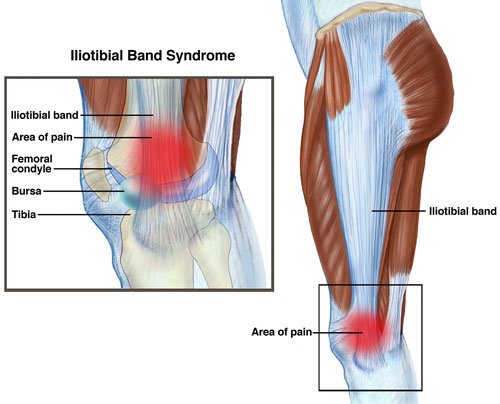Your knees are probably the last thing on your mind when running… until something goes wrong. They are a highly intricate joint made from four bones: the femur, patella, fibula and tibia. You’ll also find several ligaments and muscles will be around and connected to the joint to give it support and help it extend or flex.
When it comes down to maintaining healthy knees, the key is in strengthening and stretching exercises to build up the knees and the muscles around them. Also the power of warming up and cooling down shouldn't be underestimated.
Why Should We Take Extra Care of Our Knees?
It's so important because the knees carry most of the body’s weight. In fact, studies have been carried out showing direct correlation to someone with a higher BMI being more likely to experience knee issues such as knee osteoarthritis.
As you can see, this delicate area of our bodies needs to be looked after. Medical director of the Spine and Sports Center, Joel Press, explains that there are different structures within and surrounding the knee. These ‘little fluid-filled sacs can get inflamed’ meaning ‘pains will overlap’.
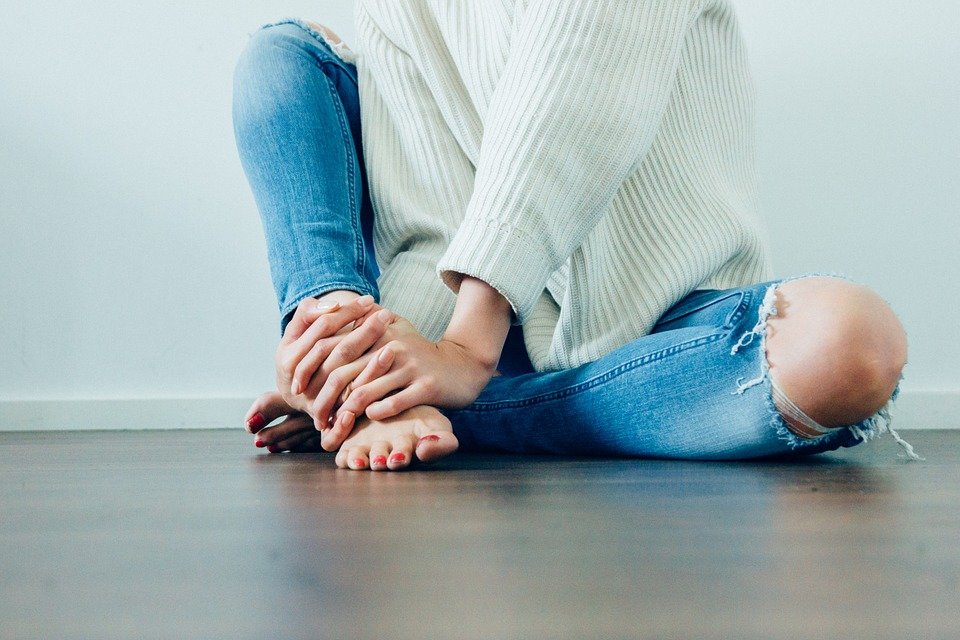
So if you already have knee issues, it’s vital to examine the overall history and issue to “pinpoint these structures and try to correlate that with any type of imaging studies.”
It’s also important to realize knee issues differ with different sexes. Research has shown women are more susceptible to experiencing knee pain than men. In fact a study published by the University of Colorado said female athletes experience knee injuries 4-6 times more than men.
It’s apparent that various aspects can contribute to bad knees. Did you know though, there are two different types of knee pains commonly experienced by runners?
The Two Commonly Experienced Knee Issues
You may be put off by all the naysayers out there telling you heart-wrenching stories of their aches and pains. Even though the knees are an area of the body susceptible to injury, you can take precautions so you stay clear of pain in this area.
Prevention is the best cure when it comes to the body. Treat it well; strengthen, stretch and work your joints and they will thank you in the long-run.
Even though there are other knee issues, patellofemoral and iliotibial are by far the most popular.
1. Runners knee, also known as patellofemoral pain syndrome (PFPS)
This type of pain is typically most common and is found around and underneath the kneecap. It often impacts runners but can also affect cyclists, hikers and people who sit for long periods of time such as office workers.
It can be one or both knees that you experience pain and it will normally worsen when you’re going up stairs or hills.
2. IT Band Syndrome
IT band syndrome, otherwise known as Iliotibial band syndrome, is another common affliction that effects runners. This pain is mainly experienced on the side of the knee with this issue. The IT band is the ligament running along the outer thigh from the hip to the shins. If runners have overdone it somehow, they may experience inflammation or tightness in this area causing the knee joint to hurt.
Runners who experience ITBS will know for certain they have it by bending the knee 45 degrees and noticing a pain in the outer knee.
Even though there are other knee issues outside of these, the above are by far the most common experienced by runners.
What Causes Knee Problems in the First Place?
As the knee is such a complex, intricate joint it is often hard to trace the cause of the issue. However, it’s safe to say that knee issues usually arise from overuse compared to trauma. Knowing the potential causes can help you pinpoint danger zones to be aware of.
Too much, too quick
Increases in intensity can lead to issues and is one of the common slip-ups in runner’s training routines. As your body isn’t getting the necessary amount of time to recover, your joints are put under more pressure. Therefore it’s essential to make gradual increases only when you’re ready.
Top tip:
To ensure you’re not overloading your body, only change one factor at a time. For example, if you’re increasing speed one day then leave distance increase to another session.
- The way we move. Our biomechanics also play a role in the aches, pains and injuries we experience. How we move may unknowingly be affecting the load we put on our patellofemoral joint. As it’s hard for us to know our biomechanics, a Physio can usually carry out a more detailed assessment. They’ll look at how muscles are activated when you move and how well they perform whilst in motion.
- Your trainers: your footwear can be another contributing factor to the amount of support and stability your knees receive. We’ve written a detailed article on how specific types of pronation affect the trainers you need and the features they have. You may require advanced motion control or you may need a better cushioning system. Whatever it is, its important to buy fresh pairs when the tread starts to wear and you reach the anywhere between 300-500 miles.
Get ahead of the curve:
This article features the best running shoes which provide optimal support for your knees in particular. In many cases, the key is looking for well cushioned shoes with a firm midsole (depending on your pronation).
Can Supplements Help Strengthen Knees?
Below you will find numerous exercises and stretches for your knees and connected muscle groups to help prevent stiffness, increase flexibility and strengthen muscles around the knee.
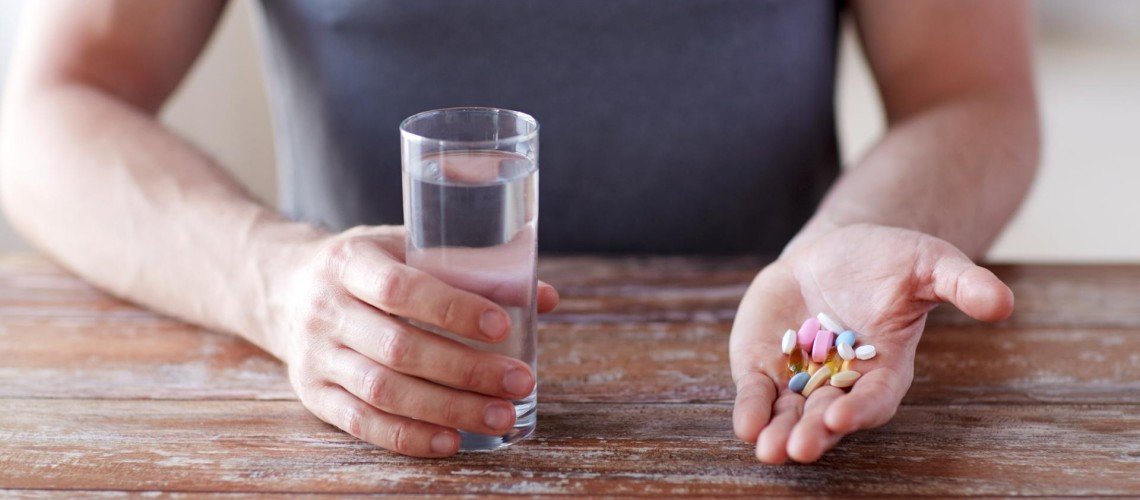
Exercising and stretching are by far the most effective ways to strengthen the knees. Although people often think supplements such as Glucosamine will be effective for building joint cartilage and resilience, studies show that one of the main benefits are in reducing the amount of perceived pain.
If used as part of a holistic routine, they can have their place in keeping joints supple even though research carried out by David Felson reveals there’s no structural change after taking a course. Dr Patience White from the Arthritis Foundation concluded there’s so much research proving weight loss and regular exercise are highly effective for treating and preventing knee pain.
Exercises to Strengthen Your Knees
Looking for a head-start? Check out this Youtube video for some great knee exercises to get you going. They feature the following:
- Strengthening the quadriceps with quad squats and leg lifts – strengthening the quads can really benefit your knees. This is because strong quads help to stabilize the joint and provide extra cushioning during motion. This technique isn’t great if you are experiencing immediate discomfort but it is good for protecting healthy knees against future injury.
- Straight leg lifts – this is performing a dynamic stretch with a bent knee, holding for three seconds before returning to the ground.
- Strengthening the hamstrings – there are several benefits to well-developed hamstrings. Solid hamstrings are crucial to accelerating with power and increasing muscular endurance throughout longer runs. Also, the hamstrings cross the knee joints meaning they activate when you bend your knees or move hips back. When doing vigorous movements such as running, these muscles are instrumental in ‘shifting the load from your knees to your hips’.
1. Lunges
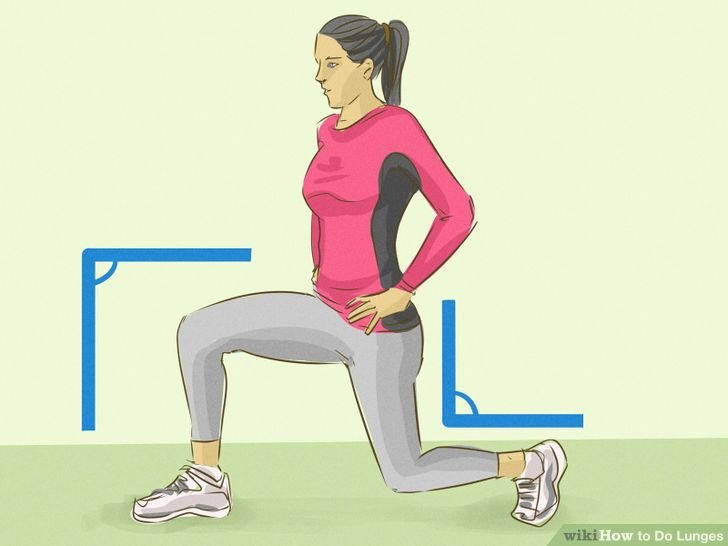
Lunging it out and dynamic stretches altogether provide a brilliant conditioning workout for your knees.
With your lunges you’ll want to do ten repetitions on each leg. You can begin with some weighted squats first. Then progress by moving forward into some lunges and mix it up with backward lunges too.
Another lunge variation you can do is balancing on one leg and lifting the other knee. Like leg extensions, bend and straighten doing an equal amount of reps on both sides. Finally, add in leg swings to give the quads and hamstrings a good stretch. Simply swing the leg forward then backwards.
2. Post-workout static stretching
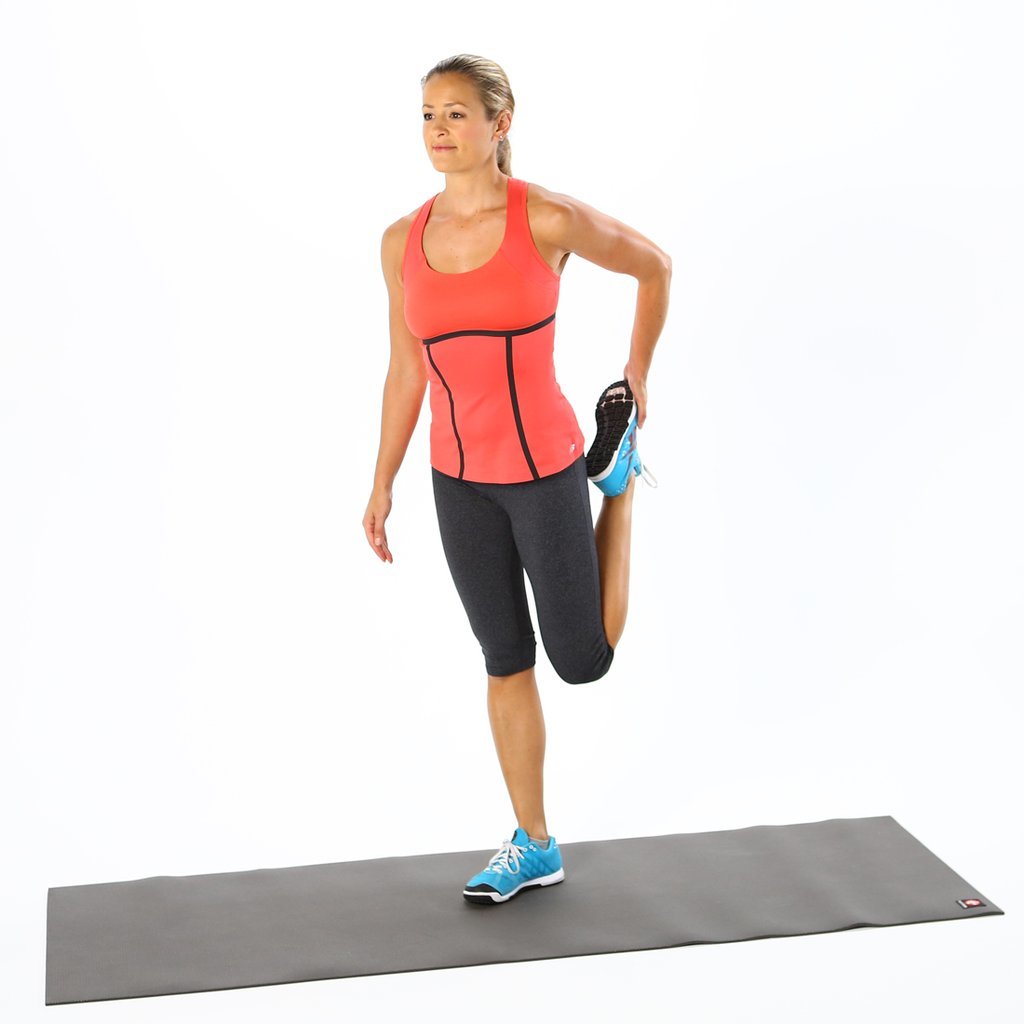
You will want to do static stretches (holding stretches) after you have been for your run to release tension from the joints and protect knees.
The standing quadriceps stretch is great for the knees. Do this one by bringing one leg behind until your foot rests on your glutes. Hold for up to 30 seconds.
To alternate, do the classic hamstring stretch by bending down to your toes ensuring knees are straight but don’t lock them. Hold again for up to 30 seconds.
3. Ankle bands

The ankle is an important joint as it acts as a hinge, enabling your knees and hips to work together collaboratively. Several runners have stiff ankles which later leads to injury. Using a band distraction as a tool to create more ‘space inside the joint complex’ can help maximize your stretching exercises.
In roundabout terms, the bands ‘floss’ stiff joints to increase range of motion and ensure nutrients can get to the cartilage to lessen and prevent pain in the knees.
How to use the distraction band –
- Loop one end round a stable base/object and the other around your ankle. The banded foot should be planted on the floor at all times of the exercise.
- Stand with the leg in the band in front of the other leg.
- Move slowly until the tension in the band increases.
- When you’re ready, move the knee forwards as far as possible. Rotating the ankle from side to side can also help enhance the stretch.
4. Squats
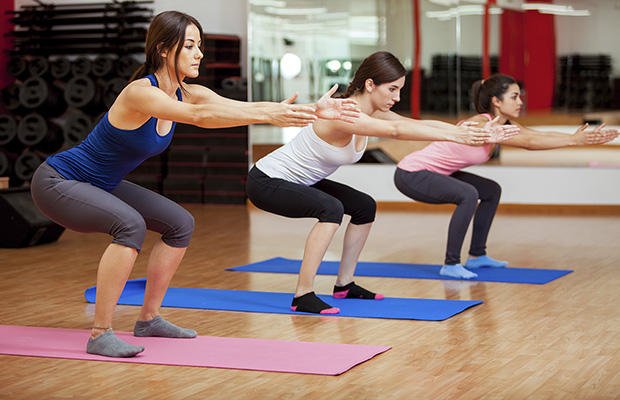
You can choose to add weights when you get into the flow. Squats are great as they help strengthen the hips which further stabilize knees and decrease injury risk. Follow these steps to complete a healthy squat:
- Feet should be shoulder with apart
- Bend knees with a slight right angle to lower body. Keep back straight at all times and glutes more inwards.
- Ensure knees never go beyond your toes
- Then on your way up, squeeze your glutes when reaching the top.
- Repeat 10 times and do 3 sets
5. Shin Rolls

Rolling out the shins with a foam roller can be an amazing tool to work into the soft tissue and treat trouble zones. Investing in one of these can really help ease muscular tension and get to those out of reach areas. Shins can often contribute to knee troubles in the future, so rolling these out can keep joints tension free.
How to roll out shins:
- Simply start doing a push-up and place the roller at your ankles.
- Turn toes towards your body’s midline to give your shins more exposure and press them down as you move them upwards by moving forwards.
- Your entire body weight should be on the roller to get a deeper massage.
- Do this exercise for 45 seconds to a minute on each leg.
6. Wall quad stretches
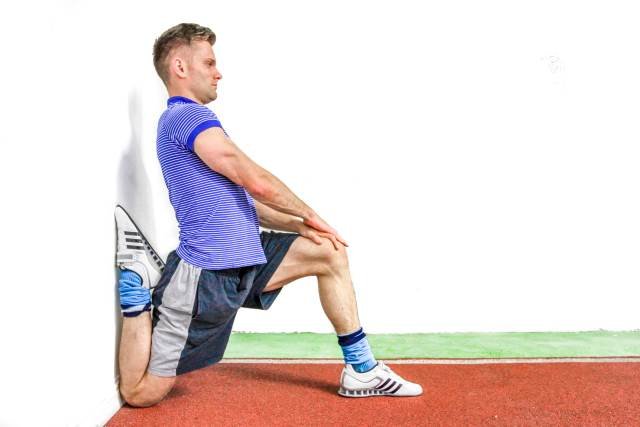
You can do this one anywhere so it’s effective and practical. It also is a great all-rounder which works your feet, shins, ankles, quads and knees!
All you need to do is face away from the wall and do a lunge. Your back foot should be against the wall with the entire surface on it. Use your back knee to intensify the stretch if you wish. The nearer to the wall it is, the deeper the stretch.
7. Hamstring stretch
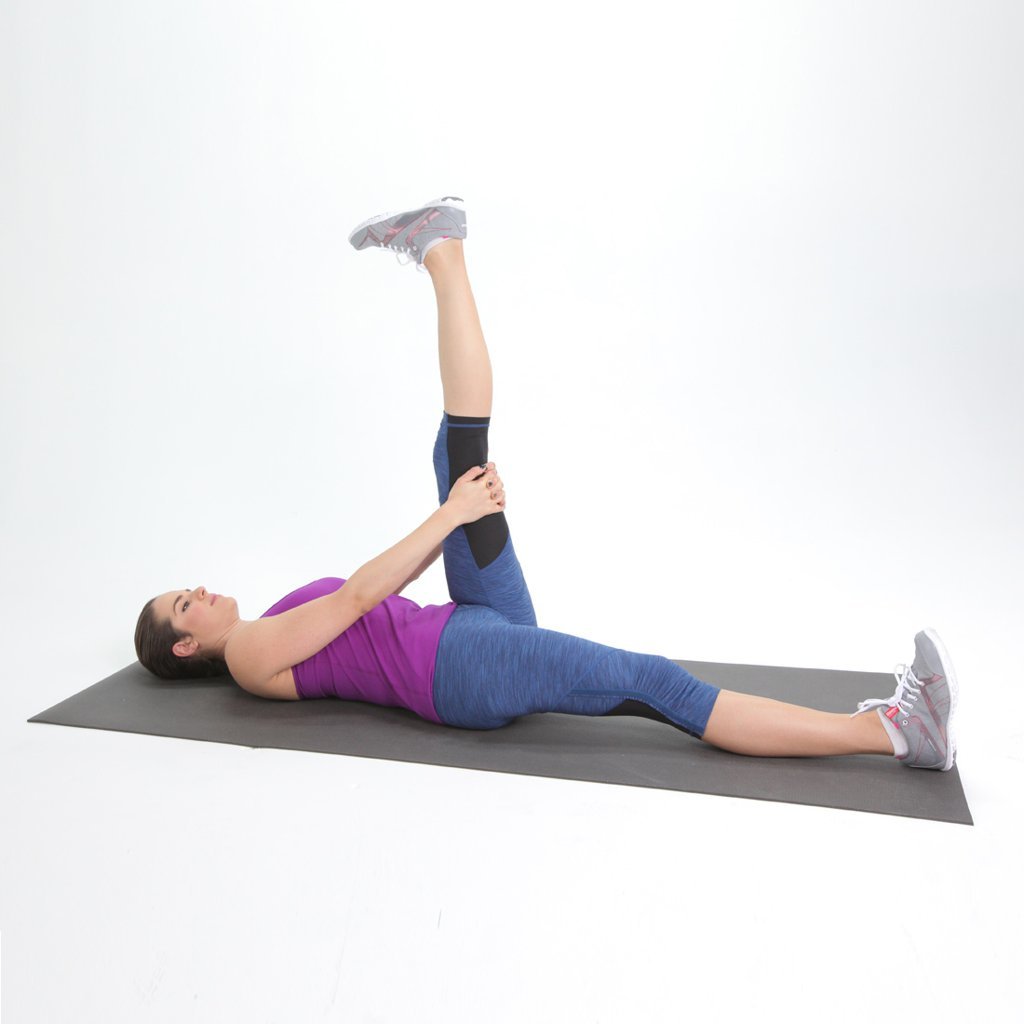
Many runners suffer from sore hamstrings. To decrease tension a simple hamstring stretch can prevent injury and release tightness.
Simply follow these steps:
- Stand or lie on your back
- Bend one leg
- Place hands underneath legs above the knee whilst you pull the unbent leg towards you gently from the thighs.
- Hold the stretch for up to 30 seconds. Repeat 3 times per leg.
8. Bending knee
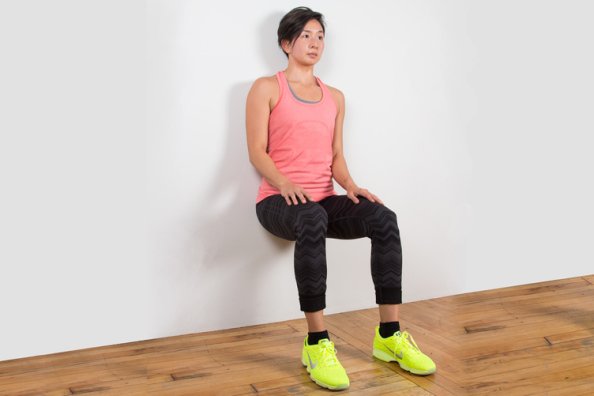
Knee bends are another effective exercise that build up the muscles around the knees which support it.
How to do it? Optional: place a ball behind your back and wall for a fluid move.
- Standing against the wall, place your feet roughly one foot away and bend knees, pointing feet outwards.
- Sliding your back down gently, feel your knees bend.
- Tense your glutes on the way up. The entire movement should be slow and gentle.
- Do 10 reps.
Other Ways to Strengthen Knees…
Try Yoga Exercises
Using yoga poses to strengthen hamstrings and knees
You’re probably wondering ‘how an earth this provides any benefit to my knees?’ Well it turns out that the poses keep the hamstring engaged throughout the stretch so it builds strength when done consistently over time and prevents knees from locking. The series consists of the following three poses and full instructions can be found here:
- Pyramid pose with the arms in airplane position
- Triangle pose with extended arms
- Bow pose
The Importance of Warm-up Stretches
Many forget about the importance of warming up the body and getting it ready for the activity it’s about to engage in. If you’re at the gym, doing a gentle bike ride for five minutes or walking briskly. Even calf raises or wall push-ups can get the knee joints warmed up so you’ll maximize your workout and lower your risk of injury.
How to warm up your knees
- 5- 10 minutes of light cardio work will help. This could include walking, cycling, stair climbs, light jogging or other forms of light cardio.
- Start with a gentle pace for a couple of minutes
- Gradually increase the intensity until your heart rate increase
- Remember the purpose of a warm up isn’t to challenge yourself so take it easy
- The benefits of doing this are to ensure efficient muscle movement and keep joints lubricated. They also help your muscles use oxygen efficiently during vigorous activity such as running.
Putting these stretches and exercises in place can really help strengthen your knees. They will also condition the joints so they are healthy in the long-term and protected from injury.

